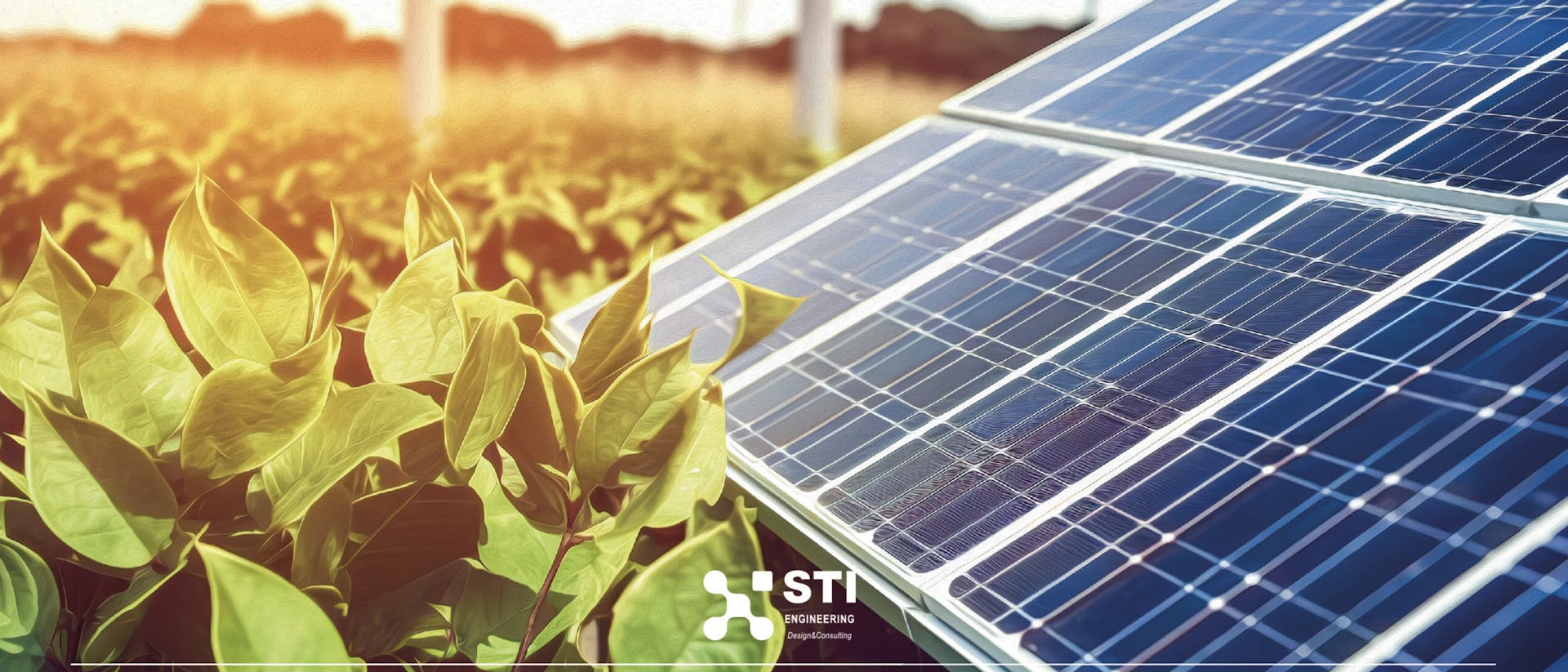
Agrivoltaics: A Green Energy Path with STI Engineering
Addressing environmental challenges often presents a complex, multidimensional task. In Italy's context, this becomes especially pronounced when examining two key figures. The first concerns the nation's ambitious renewable energy targets; the second, the land footprint of these green energy infrastructures.
Italy has set a robust renewable energy goal that aims to bring 70 GW of new power from renewable sources, predominantly photovoltaic and wind, online by 2030. This target aligns with the country's commitment to reduce carbon emissions and transition towards more sustainable energy sources, as part of its broader strategy to combat climate change. Achieving such a goal would dramatically alter Italy's energy landscape, leading to substantial reductions in greenhouse gas emissions and fossil fuel consumption.
On the other hand, there are undeniable environmental costs associated with the proliferation of renewable energy technologies. As indicated in the 2021 Soil Consumption Report by Ispra, the installation of ground-based photovoltaic systems resulted in the consumption of 179 hectares of land in Italy in 2020 alone. This is a significant amount of land, which otherwise could have been used for agriculture, biodiversity conservation, or other purposes.
This land consumption raises questions about the best ways to balance the urgent need for renewable energy with the equally vital task of preserving land and maintaining ecosystem health. Therefore, it becomes increasingly important to explore innovative solutions such as agrivoltaics, which may offer a promising pathway to harmonize these seemingly competing demands: renewable energy production and land conservation.
Agrivoltaics represents an innovation in the field of renewable energy, presenting potential solutions to current environmental dilemmas. By creating a unique synergy between solar power generation and agriculture, agrivoltaics is poised to mitigate the damaging effects of climate change on farming. Simultaneously, it contributes to biodiversity preservation and cultivates new opportunities for local communities and businesses. The agrivoltaic system serves a dual purpose, functioning not only as a renewable energy source but also as a practical tool for modern agriculture.
The concept of agrivoltaics is relatively simple yet revolutionary. This approach involves installing solar panels on active agricultural lands, with farming activities occurring between the structures supporting these panels. Such a setup enables farms to generate electricity while also producing food, making efficient use of land resources.
Agrivoltaic systems can be equipped with environmental sensors, marking a significant stride towards precision agriculture and digitalization. These sensors provide real-time data about soil moisture, temperature, and other crucial parameters, enabling farmers to make informed decisions and optimize crop yields.
The benefits of agrivoltaics become more apparent when looking at its effects on specific crops. Studies have shown that certain leafy greens and root vegetables, when grown in an agrivoltaic setting, can increase their yield by between 20% and 60%. This rise in productivity can be attributed to the optimized sunlight exposure and the microclimate created by the solar panels.
Another crucial advantage of agrivoltaics is its potential to conserve water. The solar panels provide partial shading to the crops underneath, reducing the evaporation of water and thereby decreasing the need for irrigation by up to 20%. This can be a significant benefit, especially in regions where water is a scarce resource.
Beyond its benefits to crop yields and water conservation, agrivoltaics also creates a conducive environment for pollinating insects. Forage, aromatic, and medicinal plants grown in the space under and around the panels provide an ideal habitat for these pollinators. This harmonious co-existence aids in biodiversity preservation, further underlining the role of agrivoltaics in promoting a sustainable and balanced ecosystem.
STI Engineering, active in the renewable and F&B market, recognizes the potential benefits of agrivoltaics. We aim to assist our customers throughout the process, aptly described as "from farm to fork." Leveraging our experience in the digital sector, we have the tools to actively monitor soil conditions, including its moisture levels and predicted productivity. This move aligns the agricultural world with an Industry 4.0 scenario. Through our work in agrivoltaics, we hope to contribute to a sustainable energy future.
STI Engineering, with a strong foothold in both the renewable energy and Food & Beverage (F&B) markets, acknowledges the promising possibilities that agrivoltaics holds for a sustainable future. We are committed to using our industry expertise to support our customers through every step of their journey, truly embodying the concept of "from farm to fork."
As a company that understands the importance of sustainable practices, we firmly believe in the potential of agrivoltaics to create synergy between the renewable energy sector and agriculture. This innovative approach not only supports energy generation and agricultural productivity but also aligns with our mission to contribute to a more sustainable and energy-efficient future.